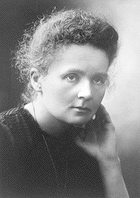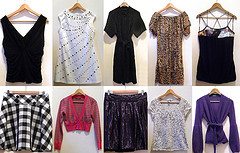3. Paco was wearing shorts and a T-shirt
If you want to learn some vocabulary on types of clothes, click here. Another list is provided here (no Spanish words are provided, so, use this dictionary if you need it). You will be able to get another good list of clothing and accessories by clicking here.
Watch this video to relax a bit from such long lists of vocabulary. You'll have fun!!!!

|
| By unknown. Public domain |

|
| By Artifex. Public domain |
"I have no dress except the one I wear every day. If you are going to be kind enough to give me one, please let it be practical and dark so that I can put it on afterwards to go to the laboratory"
In the quotation, Madame Curie used "to be kind enough". Enough (suficiente) is normally studied with too (demasiado). Let's remember how they are used!
| nouns (countable/uncountable) |
|
|
too many + countable plural nouns too much + uncountable nouns |
There are too many shirts to choose from There is too much clothing in this wardrobe |
| enough + countable/uncountable nouns |
Paco has enough T-shirts for his travel Paco has enough coffee every day to stay awake |
| adjectives |
|
| too + adj. |
These gloves are too expensive |
| adj. + enough |
These gloves aren't cheap enough |
| adverbs |
|
| too + adv. |
Paco buys clothes too often |
| adv. + enough |
Paco studies often enough to pass his exams |
D I A N A C G R - -
N E R N I D - K A T C J E - - -
Y P A S M A J - -
 |
| By gorgeoux. C. Commons |
S E L O G V - -
I E T - -
R C A T K - I T S U - -
K J I R E N - -
O S C L G - -